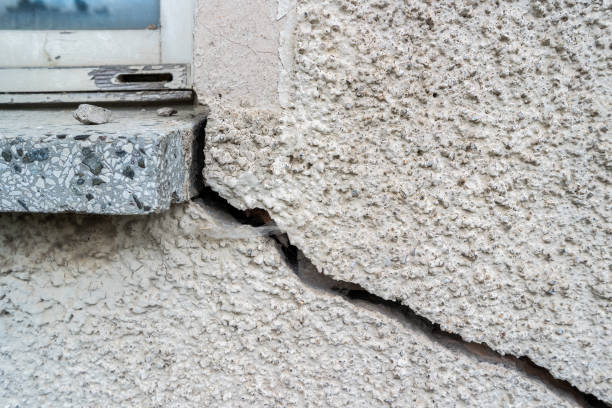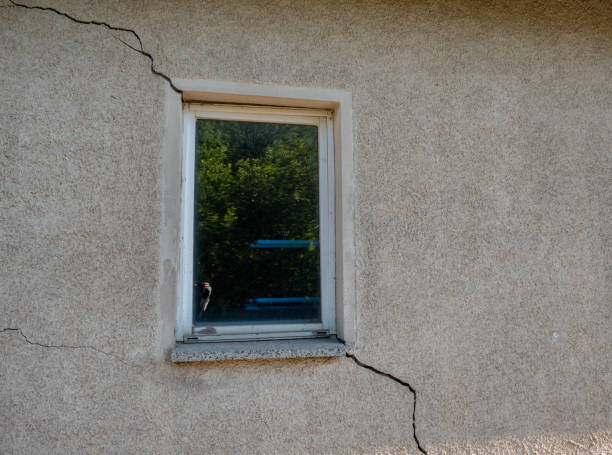
The defect liability period, often referred to as the DLP, is a specified timeframe following the completion of construction works during which the contractor is required to rectify any defects that may arise. This period is crucial for ensuring that any faults in workmanship or materials are addressed, providing clients with peace of mind regarding the integrity of their investment. The DLP serves as a safety net, mandating that the contractor is responsible for rectifying defects in the work that become apparent after the project’s completion.
During the defect liability period, any defects or issues that arise must be rectified by the contractor at no additional cost to the client. This includes structural defects, issues with the quality of workmanship, and any other faults that are not due to wear and tear or normal use. The DLP typically covers defects identified within the specified period and ensures that the contractor makes good any defects which arise during this timeframe, thereby reinforcing the liability clause outlined in the construction contract.
The length of the defect liability period can vary significantly based on the specific construction contract and the nature of the project. Generally, the DLP lasts from six months to two years, depending on the complexity and scale of the construction works. It is crucial for clients to understand the duration of this period, as it directly impacts their rights to claim for rectification of defects. A clearly defined defect liability period clause within the contract will specify the exact timeframe during which the contractor is responsible for addressing any identified defects.
What is the Maintenance Period and What Does It Mean?
The maintenance period refers to the timeframe during which the contractor is responsible for the general upkeep of the construction works after completion. Unlike the DLP, which focuses primarily on rectifying defects, the maintenance period means that the contractor is responsible for ensuring that the infrastructure remains in good condition and functions as intended. This may include routine maintenance tasks, repairs related to wear and tear, and addressing any issues that arise from the normal operation of the building or structure.
During the maintenance period, the contractor is obligated to manage ongoing maintenance activities, ensuring that the constructed works remain functional and safe for use. This includes performing repairs that may not necessarily fall under the defect liability period, such as fixing wear and tear or addressing minor issues that do not constitute defects. It is essential for the contractor to adhere to the maintenance period definition and fulfil their responsibilities to avoid potential disputes with clients regarding the condition of the works.
The primary difference between the maintenance period and the defect liability period lies in their focus and duration. While the DLP is strictly concerned with rectifying defects or faults identified within a specified period following project completion, the maintenance period encompasses a broader scope of responsibilities, including routine maintenance and repairs that may be necessary due to standard usage. Understanding this distinction is vital for clients, as it helps them set expectations regarding the contractor’s obligations during these two critical phases of a construction contract.
What is the Relationship Between Warranty Period and Defect Liability Period?

The warranty period is another crucial aspect of construction contracts, often overlapping with the defect liability period. It typically provides clients with an assurance regarding the quality and durability of the construction works. The warranty may cover a range of issues, including defects in materials or workmanship, and usually lasts longer than the DLP. Understanding how the warranty period works in conjunction with the DLP is essential for clients to ensure they are adequately protected against any potential issues that may arise after project completion.
Defects that occur during the warranty period are generally covered, but the extent of this coverage can vary based on the terms outlined in the warranty. It is essential for clients to carefully review the warranty terms to determine whether defects or faults within the construction works are included. In some cases, the warranty may cover specific types of defects, while in others, it may extend to all workmanship issues. Clients should be proactive in understanding the relationship between the warranty and the defect liability period to ensure comprehensive protection against potential defects.
The key differences between the warranty period and the defect liability period lie in their duration, scope, and legal implications. While the DLP focuses on addressing defects identified shortly after project completion, the warranty period often extends beyond the DLP and covers a broader range of issues. Understanding these differences is vital for both contractors and clients, as it affects their rights and responsibilities throughout the lifespan of the construction works.
What Happens if Defects Occur During the Defect Liability Period?
When defects occur during the defect liability period, the contractor is responsible for rectifying the defects without additional charges to the client. This rectification process involves assessing the identified defects and implementing necessary repairs to make good any defects which arise. The contractor must act promptly and efficiently to resolve these issues, ensuring that the construction works meet the quality and safety standards expected by the client.
The responsibility for rectifying defects in the work during the defect liability period falls squarely on the contractor. The contractor is required to address any identified defects and ensure that they rectify the defects to the satisfaction of the client. This responsibility is a key element of the defect liability clause in the construction contract, which outlines the contractor’s obligations regarding defects and the timeline for their rectification.
Failure to rectify defects during the defect liability period can have significant consequences for the contractor. Not only may the client pursue legal action for breach of contract, but the contractor may also face financial penalties and damage to their reputation in the industry. Additionally, unresolved defects can lead to further complications, such as safety hazards or increased repair costs, ultimately impacting the contractor’s future business opportunities in construction projects.
How are defect liability period and maintenance period addressed in construction contracts?

Construction contracts typically include specific clauses related to both the defect liability period and the maintenance period. These clauses outline the obligations of the contractor regarding rectifying defects and maintaining the works. It is essential for both parties to understand these clauses, as they define the expectations and responsibilities throughout the construction project and beyond.
Clearly defining the defect liability period and maintenance period in construction contracts is crucial for preventing disputes and ensuring that both parties understand their rights and responsibilities. Ambiguities in these definitions can lead to misunderstandings and conflicts later on, making it essential to articulate these periods explicitly within the contractual agreement.
Contractors often encounter challenges related to liability clauses in construction contracts, particularly regarding the scope of the defect liability period and maintenance period. Misinterpretations of these clauses can result in disputes over responsibilities for repairs and maintenance. Additionally, contractors may find themselves grappling with the implications of warranties and the extent to which they must cover defects under these agreements.
Conclusion
The defect liability period and maintenance period serve different purposes in construction and property management. The defect liability period is the time when builders are responsible for fixing any faults or defects in their work, usually lasting for a year or two after completion. On the other hand, the maintenance period involves regular upkeep and repairs that may be needed over a longer time frame. Understanding these differences helps property owners know their rights and responsibilities, ensuring their investments remain in good condition.
Frequently Asked Questions:
What is the difference between the defect liability period and the maintenance period?
The defect liability period (DLP) is the timeframe during which the contractor is responsible for rectifying any defects that arise in the work after practical completion. The maintenance period, on the other hand, refers to the duration during which the contractor must maintain the work and ensure it functions as intended, often including routine maintenance tasks.
What does the maintenance period mean in construction contracts?
The maintenance period mean is the specified duration after practical completion during which the contractor is required to carry out maintenance work and ensure that the project meets performance standards as outlined in the contract.
What is included in the rectification period?
The rectification period is typically included within the defect liability period, during which the contractor is responsible for rectifying any defects that arise in the work. This includes repairing or replacing any defective items to ensure they meet the agreed-upon quality standards.
Are contractors responsible for defects during the DLP?
Yes, during the defect liability period, contractors are responsible for rectifying any defects that emerge in the work. They are legally required to return to site to make good any issues identified within this timeframe.
How long is the liability period typically?
The liability period typically varies depending on the terms outlined in the contract, but it is usually set to last for a specific duration after practical completion, often ranging from 6 months to 2 years.
Is a maintenance period enough to cover all potential defects?
A maintenance period may not be enough to cover all potential defects, as it focuses on maintenance and performance. The defect liability period is specifically designed to address and rectify defects that occur after the completion of the project.
What happens if defects are found after the maintenance period?
If defects are found after the maintenance period, the responsibility for addressing those defects typically falls to the client unless otherwise stated in the contract. Home warranty insurance may cover some defects beyond this period, depending on the policy.
What is the ecological enhancement scheme for approval related to maintenance?
The ecological enhancement scheme for approval may involve specific requirements for maintaining environmental standards during the maintenance period. This ensures that the construction and design meet ecological guidelines while also addressing any defects that may affect these standards.
How can I ensure that all defects are promptly rectified?
To ensure that all defects are promptly rectified, it is essential to have clear communication with the contractor, maintain thorough documentation of any issues, and understand the terms outlined in the contract regarding the defect liability period and maintenance obligations.





